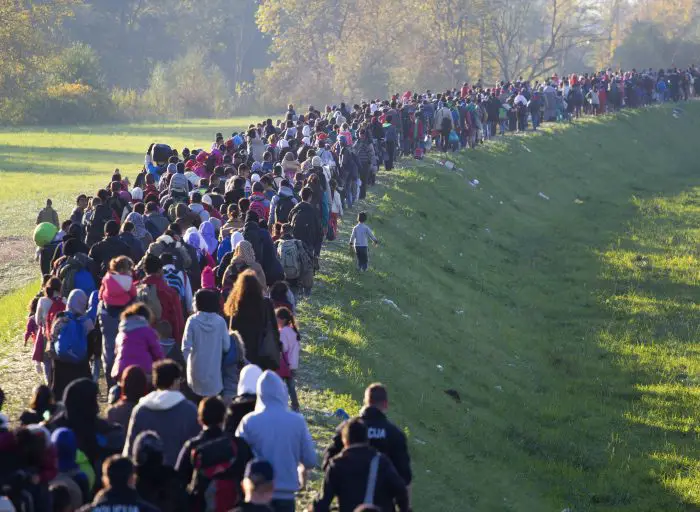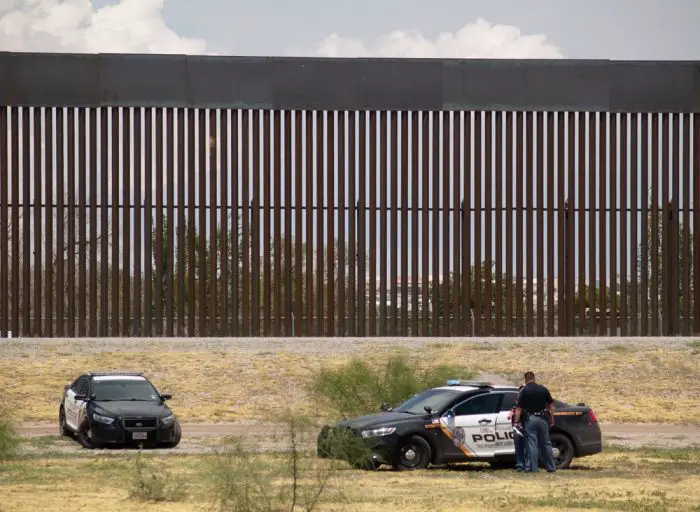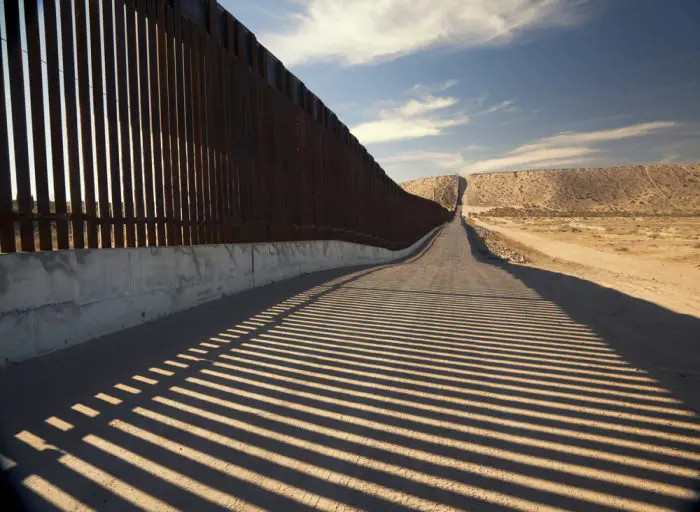Table of contents
In March, it will have been two full years since Governor Greg Abbott launched Operation LoneStar in Texas, a massive border security initiative aimed at curbing illegal immigration along the Texas-Mexico Border. The operation, which was facilitated by Abbott’s disaster declaration in May of 2021, directs the state Department of Public Safety to use “available resources” to “prevent the criminal activity along the border” – a broad mandate that has only grown in scale in the intervening years.
READ | TEXAS GOVERNOR SENDS ILLEGAL IMMIGRANTS TO D.C. IN BOLD POLITICAL STATEMENT
Operation LoneStar in Texas has involved over 6,000 state National Guardsmen, a thousand State Troopers and other DPS personnel, and well over $4 billion in state funds, including reallocated funds from other state agencies – but if you think the initiative is winding down any time soon, think again. Data released by US Customs and Border Patrol in November of last year show a huge increase in attempted border crossings, and with the state legislature convening this week for its 88th session, you can bet that Operation Lone Star will be top of mind.
As we approach the two-year mark, it’s worth taking stock of the operation so far: how have the funds been spent? How successful has it been in preventing or mitigating illegal activity at the border? And what does the future hold for Operation Lone Star?
Background of Texas Border Policy and Operation LoneStar
Border policy has become a hot topic in Texas (and national) politics in the last few years. After nearly two decades of decline, illegal immigration began rising about five years ago. And, since the COVID pandemic has soared to levels not seen since the 1990s. In fact, last year saw the US Border Patrol’s highest rate of apprehensions since records began in the 1970s.
In response, Governor Abbott launched Operation LoneStar in Texas on March 6th of 2021. Abbott cited policy changes instituted by the incoming Biden administration. In particular, the administration’s decision to end outgoing president Trump’s “Remain in Mexico” protocols.

READ | Greg Abbott’s legislative wins and what the future may hold for Texans
Despite the heightened rhetoric of incipient “invasion,” the initiative began on a fairly small scale, involving only 500 state National Guard troops. However, Abbott rapidly scaled up the program in response to a simultaneous surge in attempted border crossings in the same month.
Abbott issued disaster declarations for nearly 50 border counties in May of that year, a move widely criticized as a usurpation of power that should properly belong to the legislature or federal government. Legislators questioned the timing of the move, and local politicians argued that the declaration painted an inaccurate picture of the situation at the border. However, there’s no question that this declaration made Operation Lone Star’s dramatic expansion possible.
Texas’s “weak governor” system of government ordinarily extends very little executive authority to the governor. But, Abbott was able to give himself sweeping powers to spend money and even suspend local laws to respond to the self-declared emergency. He moved quickly to take full advantage of these powers. By the summer of 2021, Operation LoneStar in Texas had ballooned into a statewide mobilization.
Expenses incurred for Operation LoneStar in Texas
Operation Lone Star has not been cheap, whether costs are counted in dollars or in work hours. Because of the size and complexity of the operation, exact figures on actual spending have not been forthcoming. But so far the governor and the state legislature have allocated a little over $4 billion explicitly for the initiative.
In addition to these funds, the governor has also used his emergency powers to divert money from other state agencies. Agencies as diverse as the Texas Alcoholic Beverages Commission (TABC) and the Health & Human Services Department (HHSD) have seen ordinary funding diverted to fund the initiative, including $500 million in 2022 and at least $350 million more slated for 2023.
The human resources investment has been equally large. Most of the personnel assigned to support Operation LoneStar in Texas have been state National Guard troops. But, the operation has also involved staff from other agencies, including the Department of Criminal Justice (TDCJ) and Department of Public Safety (DPS).

Although he claimed that the state would send 10,000 troops to the border in 2022, so far no more than 6,500 have been assigned to the initiative at any one time (currently there are about 5,000 troops involved). Even so, the rapid deployment and limited preparation time have led to significant challenges for the state National Guard.
Significant Challenges for the Texas state National Guard
Pay has been one of the biggest issues: since the start of the operation. Around 1 in 5 troops has received incorrect pay due to a hastily introduced new payroll system. Some soldiers lost civilian jobs due to their sudden and indefinite deployment, only to wait weeks or months for paychecks. One trooper received only three biweekly paychecks in four months of service.
And the problems haven’t ended yet. In October 2022, it was discovered that thousands of troops stationed at the border had not had taxes withheld. Meaning, that they will likely owe money for their 2022 taxes.
Unfortunately, the issues haven’t been only administrative. Hastily-deployed troops have complained of poor living conditions, unsustainable workloads, and unclear assignments. The strain of the mission has taken a toll on many soldiers. At least five Guardsmen have died by suicide since the start of the operation. Five more have died in accidents during deployment.

In addition to the National Guard, Operation LoneStar in Texas has sometimes included substantial numbers of state troopers, prison guards, Texas Rangers, and other state personnel. About a thousand DPS personnel – nearly a quarter of the department’s staff – are involved in the operation. As well as over 150 prison staff whose facility has been emptied of inmates for use holding detained migrants.
Results so far in Operation LoneStar in Texas
Given the investment that the state and Governor Abbott have made in Operation Lone Star, it’s fair to ask what the returns have been to date. There’s no question that the operation has led to increased apprehensions, but whether it’s truly making the border safer remains the subject of debate.
As of the end of the last fiscal year, Operation LoneStar in Texas has resulted in around 300,000 apprehensions and 20,000 arrests. This is a far cry from the governor’s initial claim that the DPS would be “arresting everybody coming across the border,” a claim which wasn’t really possible even at the time due to federal immigration law. The majority of those arrests have been misdemeanor trespassing charges of migrants crossing the border into private property.
Lest we forget, the purpose of Operation LoneStar in Texas was not only to deter illegal immigration but to fight the import of illegal drugs, particularly fentanyl. The governor’s claims that nearly 900 pounds of fentanyl have been seized in the operation are not quite accurate. Only about 100 pounds have been seized at or near the border. (As with illegal immigrants, the vast majority of illegal drugs in the United States enters the country through legal ports of entry.) The governor and DPS have also claimed that over 700 gang or cartel members have been caught. But have not yet provided documentation of this claim.
Operation LoneStar in Texas has had undeniable successes
If judged in terms of enforcement, Operation LoneStar in Texas has had undeniable successes. But, the extent of these successes has been over-exaggerated by Republican – state politicians – as well as under-exaggerated by state Democrats. The fact is that the numbers of apprehensions are more reflective of an increase in attempted border crossings than of improved enforcement, and so far the operation does not appear to be deterring this rise: total apprehensions, both at the state and national level, have increased slightly since the start of the operation. (The fact that the increase has been similar in other states suggests that it’s not due solely to more robust enforcement.)
READ | Current list of U.S. Texas Representatives
Conclusion
Whether you think Operation Lone Star has been an unqualified success or an unmitigated disaster, there’s no question that it will go down in the history books as one of the most significant mobilizations in the state’s history. At $4 billion and nearly 10,000 personnel, it’s lived up to the governor’s frequent invocations of “invasion,” as it has at times resembled a military operation more than a disaster response.
This spring, the Texas legislature will have the opportunity to debate and discuss the progress of the operation for the first time since it began, and they’ve already signaled that it will remain a top priority in terms of funding and policymaking. As we transition from midterm elections into “presidential campaign season,” expect Operation Lone Star to become even more salient to Texans and to the nation.
Sources
OLS expansion, May 2021:
https://www.texastribune.org/2021/05/27/abbott-border-fentanyl/
Disaster declaration:
https://www.krgv.com/news/gov-abbott-issues-disaster-declaration-along-texas-southern-border/
Funding reallocations:
https://www.texastribune.org/2022/10/27/operation-lone-star-greg-abbott-budget/
https://gov.texas.gov/news/post/governor-abbott-texas-state-leadership-approve-495.3-million-in-additional-funding-for-operation-lone-star-border-security-operations
Personnel:
https://www.texastribune.org/2022/09/14/texas-operation-lone-star-deployments/
National Guard involvement:
https://www.texastribune.org/2022/02/01/texas-national-guard-border-operation-lone-star-abbott/
Suicides:
https://www.armytimes.com/news/your-army/2021/12/23/wave-of-suicides-hits-texas-national-guards-border-mission/
Results and fact check:
https://www.texastribune.org/2022/04/27/texas-operation-lone-star-greg-abbott-border/
